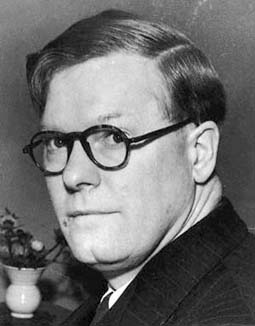


 تاريخ الرياضيات
تاريخ الرياضيات
 الرياضيات في الحضارات المختلفة
الرياضيات في الحضارات المختلفة 
 الرياضيات المتقطعة
الرياضيات المتقطعة
 الجبر
الجبر
 الهندسة
الهندسة 
 المعادلات التفاضلية و التكاملية
المعادلات التفاضلية و التكاملية 
 التحليل
التحليل
 علماء الرياضيات
علماء الرياضيات |
Read More
Date: 14-11-2017
Date: 12-10-2017
Date: 14-11-2017
|
Died: 3 March 1991 in East Hendred (near London), England

Bill Penney attended school in Colchester, then spent the years 1924-26 at Sheerness Technical College. After leaving he took a job as a laboratory assistant before being awarded a scholarship to studied at the University of London in 1927. He won the Governor's Prize for Mathematics and graduated with First Class Honours in 1929.
After two years at the University of Wisconsin he returned to England and obtained a doctorate from the University of Cambridge in 1935 on the application of quantum mechanics to the physics of crystals. He was then appointed Reader in Mathematics at Imperial College London, a post he held from 1936 to 1945.
In 1944-45 he worked on the USA atomic bomb project at the Los Alamos Scientific Laboratory, New Mexico. In particular he worked on the use of the atomic bomb, its effects and in particular the height at which it should be detonated.
Returning to England he worked on the British atomic bomb project, saw the project through to the test of the first bomb in 1952. At this point Penney was offered a Chair at the University of Oxford. Always more inclined toward the academic life he was keen to accept this post but he was persuaded that the "national interests" required him to continue as director of atomic-weapons research and development at Aldermaston.
From 1954 Penney served on the Board of the Atomic Energy Authority, becoming Chairman in 1964. He retired his post of Chairman in 1967 and accepted an invitation to become Rector of Imperial College. He resigned this post after 6 years and although he led the College successfully the reason for his early retirement may be explained by his own words about this period:-
These were difficult times .... The students were sometimes uncontrollable, the heads of departments were bewildered and angry, the rest of the staff, including the technicians, wanted a say in how everything was run.
He received many honours. In 1946 he was made O.B.E., in 1952 K.B.E. and made Baron Penney of East Hendred in 1967. He received an O.M. in 1969. Other honours include being elected a Fellow of the Royal Society in 1946 and in 1966 he was awarded its Rumford Medal:-
... in recognition of his distinguished anf paramount personal contribution to the establishment of economic nuclear energy in Great Britain.
He was elected a Fellow of the Royal Society of Edinburgh in 1970. He also received honorary degrees from five universities.
In [2] he is described as follows:-
In appearance, he was a rotund, rather owl-like figure, usually casually dressed. He was friendly and amiable, if sometimes rather withdrawn in company, often with an amused smile for he had a keen sense of humour. ... He spoke slowly ... He said little, but what he said was much to the point, and carried authority, and he had a gift for laconic comment.
Articles:



|
|
|
|
التوتر والسرطان.. علماء يحذرون من "صلة خطيرة"
|
|
|
|
|
|
|
مرآة السيارة: مدى دقة عكسها للصورة الصحيحة
|
|
|
|
|
|
|
نحو شراكة وطنية متكاملة.. الأمين العام للعتبة الحسينية يبحث مع وكيل وزارة الخارجية آفاق التعاون المؤسسي
|
|
|